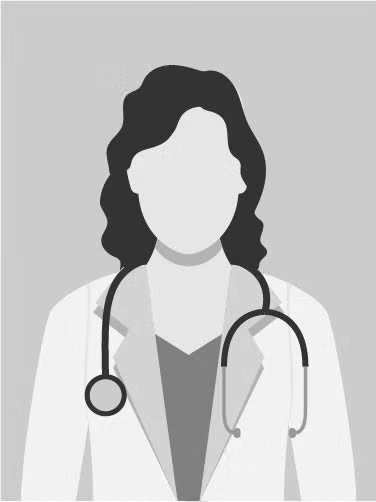The Basics of Breast Cancer
Be Proactive About Prevention
September 9, 2025

The end of summer can be bittersweet, but it means that October is around the corner – arriving just in time to ease us into the chilly winter months and help us make the most of what’s left of the season. The summer landscape is replaced with a kaleidoscope of leaves, orange jack-o-lanterns glow where flowerpots once bloomed, and the back-to-school blues are forgotten when there’s a confetti of Halloween candy on the horizon. But of all the colors we associate with this magical month, one in particular deserves the spotlight year-round: THINK PINK.
Many of us know that October is Breast Cancer Awareness Month, an annual campaign easily recognizable by its symbolic hot pink ribbon. But did you know that at any given time – in any given month – over 4 million Americans1 are living with, being treated for or recovering from breast cancer? In fact, it’s the second most common cancer in women, surpassed only by skin cancer. October is a great month for many reasons, but as far as breast cancer awareness goes, there’s no better time than right now to prioritize your breast health. Don’t wait – read on to learn more about the basics of breast cancer.
What is Breast Cancer?
Breast cancer occurs when abnormal cells in your breast tissue grow uncontrollably. The most common types of breast cancer occur when these cells form a malignant tumor. They include:
- Ductal Carcinoma In Situ (DCIS): A non-invasive cancer where abnormal cells are found in the lining of the breast milk duct but haven’t spread beyond it.
- Invasive Ductal Carcinoma (IDC): The most common type of breast cancer, accounting for about 80% of all cases2. It begins in the milk ducts and invades nearby breast tissue.
- Invasive Lobular Carcinoma (ILC): This type starts in the lobules (milk-producing glands) and can spread to surrounding tissues. It represents about 10–15% of diagnoses.
Breast cancer can also manifest in less common ways and as less common types, including:
- Inflammatory Breast Cancer (IBC): A rare but aggressive breast cancer that blocks lymph vessels in the skin, causing swelling and redness.
- Triple-Negative Breast Cancer (TNBC): A type of cancer that lacks estrogen, progesterone and HER2 receptors, making it harder to treat with hormone-based therapies.
- Paget’s Disease of the Breast: A rare cancer affecting the skin of the nipple and areola, often mistaken for other skin conditions.
Who is At Risk?
While women account for 99% of breast cancer cases, make no mistake – men are also at risk of developing this disease. In fact, because men have less breast tissue, breast cancer in men tends to spread faster and be caught later on average. The genders also share similar risk factors:
- Risk increases with age, especially after age 50. For women, those who have their first child after 30 (or never have children at all) or have late menopause (after age 55) are at an increased risk. For men, most breast cancers occur between ages 60-70.
- Genetics play a major role in breast cancer risk, especially if you have a family history of breast cancer and/or BRCA1 or BRCA23 gene mutations.
- Lifestyle Factors, like obesity, physical inactivity, consuming alcohol and smoking can also impact your breast cancer risk.
- Having Dense Breast Tissue. On a mammogram, dense breast tissue shows up in a way that can resemble or obscure cancer, making it more difficult to detect. Individuals with dense breast tissue are encouraged to talk to their doctor about additional screening options.
Signs and Symptoms
Below is a list of common breast cancer symptoms for women and men alike. While not all of these are surefire signs of disease, the CDC recommends4 that you talk to your doctor if you notice any of the following changes:
- A lump or thickening in the breast or underarm
- Change in breast size, shape or appearance
- Skin changes such as dimpling or redness
- Nipple discharge other than breast milk
- Nipple inversion or pain
You should be particularly vigilant of sudden swelling, redness, warmth or changes to your breast skin, especially if it starts resembling an “orange peel” – this can be a sign of Inflammatory Breast Cancer, specifically. Additionally, red or flaky skin around the nipple accompanied by itchiness could be a sign of Paget’s Disease.
Be Proactive About Prevention
Women over the age of 40 are encouraged to screen annually for breast cancer via mammogram, a type of low-dose x-ray. Additionally, men and women alike should monitor themselves for early signs of breast cancer by performing monthly self-exams. While not a substitute for clinical screenings, the National Breast Cancer Foundation5, Inc. notes that 40% of diagnosed breast cancers are detected by individuals who felt a lump.
To perform a self-exam, stand in front of a mirror with your arms at your sides, then raise them overhead. Look for changes in shape, skin texture or nipple alignment. Then, lay down. Use your right hand to check your left breast and vice versa. Move fingers in small circular motions, covering the entire breast from outer edge to nipple.
Women are encouraged to perform self-exams monthly, ideally a few days after menstruation ends. Men and postmenopausal individuals should choose one day each month to self-exam.
Conclusion
Breast cancer awareness month is only once a year – but breast cancer vigilance should be prioritized year-round. Don’t wait to be reminded to monitor your breast health. Perform monthly self-exams, attend your annual mammogram appointment and be sure to alert your doctor of any changes to your breasts. At AtlantiCare, Kay Yoon-Flannery, DO and our breast health team are available and ready to provide screenings, advanced surgery and personalized care whenever you need it.






